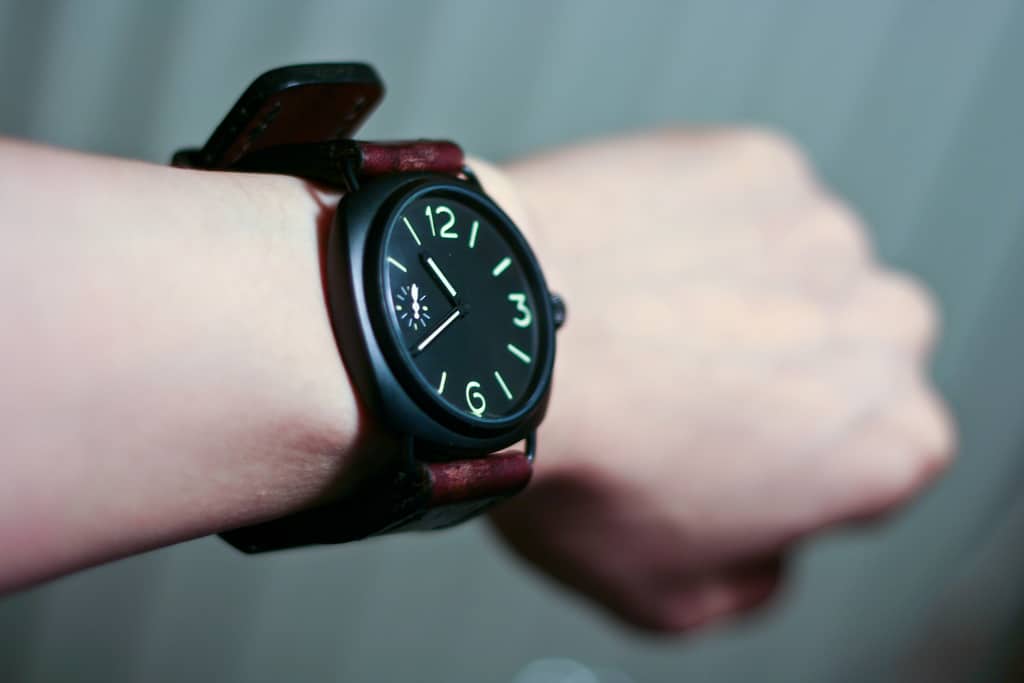Guys wearing jewelry certainly isn’t a new trend. Consider the famous 1588 portrait of Sir Walter Raleigh donning a popular pointy beard with a double-pearl earring. Men have worn jewelry for centuries.
Of course, what’s acceptable one time period falls out of favor the next. But men have always worn some type of jewelry. And it’s no different today. Here’s your practical and fun guide to wearing jewelry the right way.
Watch Your Watch
The most common piece of jewelry men wear today is the wristwatch. On one end of the spectrum, you have the enduring popularity of high-end luxury watches — from those that cost thousands to those a bit more accessible. On the other end, you have perfectly serviceable — albeit mainstream — mass-produced watches available at your local drugstore. There’s a wristwatch to fit every guy for every occasion. But wristwatches weren’t always the most popular piece of jewelry for men.

Before the 20th century, wristwatches were strictly in the women’s jewelry realm. Hungary’s Countess Koscowicz was the lucky recipient of the first wristwatch in recorded history. Early wristwatches for women were less about practicality and more about beauty.
Men of the time used pocket watches. Much like wristwatches today, pocket watches were manufactured in a wide range of different styles and price ranges, from affordable basic designs to expensive jeweled gold. The quality of a wearer’s pocket watch was a clear sign as to his station in life. But, pocket watches were doomed. What caused their demise? It was war.
Rumors have it that as early as the Boer War there were attempts to strap clocks to the wrists of commanders and soldiers. Let’s face it, stopping in the middle of a battle to look at your pocket watch has decided disadvantages if you want to live to fight another day.
Watchmaker Girard-Perregaux is thought to have made the first wristwatch prototype for the German Imperial Navy. The tiny timepieces were attached to bracelets and produced for the navy. But, it wasn’t until WWI when the wristwatch became widely used. Soldiers came home still wearing wristwatches and their practicality vastly overwhelmed that of the pocket watch. Pocket watches soon fell out of favor.
You probably think you’d have to try hard to wear a wristwatch the wrong way. You’d be wrong, Here’s the right way to wear a wristwatch:
- Most guys get this right: put the watch on your “non-dominant” hand side. If you’re right-handed, wear it on the left and vice versa.
- Wrist placement counts: stand with your arms at your side. If the watch is in the right position, it should be inside the cuff and mostly covered.
- Wear the right watch at the right time: dress watches typically have white dials, gold casings and leather straps. Wear a dress watch to make an impression. Casual watches, depending on the strap and style, can be worn to the office as long as they aren’t overly large or distracting.
Getting the Rings on Right
You’ve seen the guy with the giant jeweled ring on every finger. You probably wondered exactly what he did for a living. Is he some shady wise guy? Would he look at home on a pirate ship? Whatever you thought, overdoing it in the jewelry department sends the wrong message.
The rules for wearing rings, other than engagement and wedding rings, define elegance and balance. Rings can also be symbolic. You may have a class ring or Air Force, Naval or Merchant Marine Academy ring that means a great deal to you. Wearing your ring the right way is a sign of respect. Follow these rules to wear rings with confidence:
Maintain Proportions: Smaller hands require smaller rings, larger hands require larger rings. And, make sure your ring is sized correctly. Take it to a jeweler to have it properly fitted.
Maintain Your Balance: If you wear several rings at a time, don’t wear them all on one hand. Balance between both hands. If you also wear a watch, count it as part of your balancing act.
There Is Such a Thing as Too Many: You love rings but wearing one on every finger is too much. Two or three in a balanced total is the limit.
The Necklace or Not Debate
No piece of men’s jewelry causes as many different reactions as the necklace. Some men love them, some hate them. Some women love necklaces on men, others loathe them. Part of the problem may be that many guys who wear them are doing it wrong. Men can wear necklaces and make it work. Here’s how:
Simple Is the Way: Women wear necklaces as centerpieces, but men can’t get away with that. Gems and flashes — just say no. Your goal is to provide balance, not to overwhelm.
One Metal at a Time: Wearing a gold watch? Wear a gold necklace. The traditional rule is “never mix metals.”
Complement Colors: If you’re wearing earth tone clothing, wear gold. Gold also works well on deep green and blue hues. Silver is a neutral color but provides the perfect complement when worn with dark gray or black clothing. Silver also works well with the softer colors of summer.
Don’t Oversize It: Choose a necklace that fits your body type and size. If you’re tall, you can get away with a longer chain. Optimal chain length is 6″ to 8″ above the navel. Also be aware of necklace thickness — if you have a stocky build, you can look great in a thicker width. If you’re slim, stick to thinner widths.
Earrings and Other Piercings
The type and style of acceptable earrings for men depends on cultural norms at a given time. Earrings are widely accepted in most places, however, be aware of cultural and business norms within in your own sphere. As with most jewelry, don’t choose earrings that overwhelm, but accent what you’re wearing and complement other pieces.
Your choice of jewelry is highly personal. But how you wear it says a lot about who you are. Don’t send the wrong message by wearing jewelry the wrong way. Balance and complement — that’s the key.

